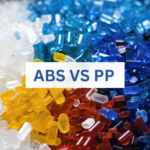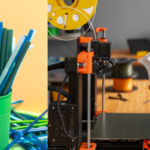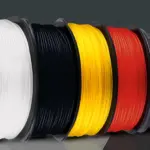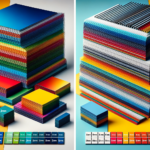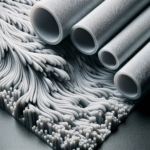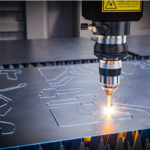When looking for personalized t-shirts, tablecloths, or tote bags, you may come across a variety of foreign-sounding printing kinds on the websites of various printers. You’re probably wondering what the difference is between all these printing alternatives that sound so similar, such as heat transfer vs. screen printing, and the most recent modern era digital printing.
We’ll break down the differences between these three main printing kinds in this article to help you decide which printing technique is ideal for you.
There is no denying that each of these procedures has various finishes.
If you want a more realistic, retro, or softer look, screen printing is the way to go; but, if you want to apply pressure and heat to use customized graphics to things, heat transfer is the way to go.
Digital printing, on the other hand, is something to consider if you want a more current, fresh, and sharp look.
This is only one of the factors to consider when determining the ideal printing process for you; we’ve listed everything from the basics to the benefits and disadvantages of each below.
First and foremost, understand the concepts of these methods
Table of Contents
Screen Printing
A stencil (also known as a screen) is used in the screen printing process to apply layers of ink to the printing surface one at a time. A distinct screen is used for each new color.
What is the purpose of screen printing?
Screen printing is a versatile process that may be used to print on a variety of materials, including fabrics, plastic, and latex. It’s widely used for things like balloons, apparel, and wallpaper because the surface you’re printing on doesn’t need to be printed under pressure.
Heat Transfer Printing
The heat transfer print technology applies a blend of pressure and heat to apply unique designs on products such as t-shirts and tablecloths. Vinyl heat transfer and digital print heat transfer are two common types of heat transfer printing.
What is the purpose of heat transfer printing?
The two types of heat transfer printing serve various purposes.
A machine is used to cut out individual letters and designs from pieces of colored vinyl in the vinyl heat-transfer process. The entire image is then stitched together on the promotional item and heated to transfer the picture. This technique is great for printing sportswear jerseys, slogans, or small multi-colored designs.
Whereas, A digital print heat transfer is created using a procedure similar to that of a home printer. The entire graphic artwork is created on a computer and then digitally printed on high-quality paper with solvent ink.
The ink clings to the material and the graphic image transfers to the promo item when the paper is heated and applied to the item. This process produces high-resolution graphics on T-shirts and other clothing, making it suitable for complicated patterns with multiple colors.
Heat transfers are ideal for applications with a short print run or many colors. This printing method necessitates a specific printer and paper, as well as a heating press to set the design in place.
Digital Printing
This method is much more recent, and it entails the use of sophisticated computing. The image on the screen is analyzed before being transformed into a format that may be printed directly onto the desired surface.
What is the purpose of digital printing?
Direct mail and coupons, as well as any print that requires a more modern, sharp finish, are common uses for digital printing. In comparison to screen printing and heat transfer printing, this technology is far more intricate.
Digital printing may be used for almost anything and is a faster alternative to screen printing. It is also incredibly easy to personalize.
Benefits and Drawbacks: Screen Printing Vs Heat Transfer Vs Digital Printing
Screen Printing
The benefits:
- Screen printing is less expensive in big quantities
- Fabrics have a softer feel
- Designs are more durable and endure longer
- Allows for more bright colors, even on dark fabrics
The disadvantages: ·
- Limited to simple designs with few colors
- The setup procedure can be messy and time-consuming
- Expensive to set up, necessitating higher minimums
- Not suited for small orders
- Not appropriate for photo reproduction
- Uses more chemicals and equipment than heat transfers
Heat transfer
The benefits:
- More cost-effective for modest orders
- Easy to print photos with numerous colors and complicated designs
- A low-cost setup keeps expenses low
- Produces high-quality photos
- Allows you to easily create different shirts
- Clean and ecologically friendly
The disadvantages:
- Not suitable for darker shirts;
- Designs do not endure as long as screen-printed shirts.
- Gives the fabric a firmer texture
- Colors aren’t as vibrant as screen printed shirts
Digital Printing
The benefits:
- The fastest one which the best alternative.
- It’s definitely the most cost-effective option if you only need a few prints.
- Greater adaptability
- Allows for more frequent modifications if necessary.
- Ideal for sending personalized correspondence.
- The finish is sharp and crisp.
The disadvantages:
- Color matching errors – the color on the screen may differ slightly from the color when printed.
- Cracks in the folds – when the ink isn’t entirely absorbed into the paper, cracks can emerge.
- When a large number of prints are needed, the price goes up.
Quality Comparison of Screen Printing Vs Heat Transfer Vs Digital Printing
The design produced using the heat transfer approach will likely look to be of higher quality when first printed; but, graphics generated using the screen-printing approach will look to be of higher quality over time.
In contrast to heat-pressed ink, which rests on top of the cloth, the ink becomes a part of the fabric during the screen-printing process. That’s also why heat transfers aren’t as durable as screen prints when it comes to machine washing and drying – they can crack and vanish.
Moreover, digital printing is better suited to detailed work since the layers of ink are thinner, ensuring a more precise final print.
Screen Printing Vs Heat Transfer Vs Digital Printing: Cost-effectiveness
Depending on the number of prints you needed, one of the procedures may be preferable to the other. If you only need a few copies, for example, screen printing is usually not the ideal option because the initial setup can be costly.
However, the more print you need, the less expensive this process becomes in the long term, because once the screen printing equipment is calibrated, it doesn’t need to be done again. The root fee is frequently collected as a one-time fee for this setup.
The cost of heat transfer remains constant because the vinyl is practically the same. Furthermore, the vinyl applied on one item of clothing cannot be utilized on another item of clothing. If you’re doing digital heat transfer, on the other hand, you might be able to reuse transfer papers and save money as you print more garments.
Overall, heat transfer is more suited for little runs than lengthy runs, especially when the cost is a factor.
Digital, on the other hand, is far less expensive for lesser quantities because there is no origination fee to pay.
The number of colors you choose to utilize can also affect the pricing per print. Digital printing in black and white is less expensive, but it makes no difference whether you want one color or a hundred.
With screen printing, each new color requires the performance of an additional screen, so any more colors will be costly.
Final Thoughts
The best printing method for you is determined by the sort of item you’re customizing and the number of copies you’ll need.
Because each color of a screen printed design requires a separate screen, it is far more cost-effective to make a large number of goods at once rather than a few at a time. For example, screenprint orders of at least 500 pieces are preferred.
In contrast, because the heat transfer technique is the same for every print, you can order a few products at a time without the cost spiraling out of control.
Furthermore, digital printing is best suited to items requiring a high level of detail as well as orders of a smaller quantity. The absence of screens in the digital printer allows for a photographic print with far more detail than traditional screen printing and heat transfer.
